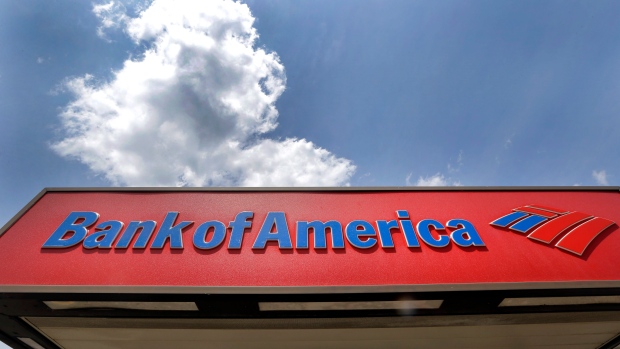Jul 18, 2017
Bank of America's quarterly profit rises 11%
, Reuters

Bank of America Corp (BAC.N) reported a higher-than-expected quarterly profit on strength in its consumer bank and cost cuts that are beginning to bear fruit after years of branch closures, staff cuts and efforts to reduce technology and paper-related expenses.
In the consumer division, Bank of America managed to increase deposits at a lower cost and use those cheaper funds to fuel loan growth. That business posted profits higher than any other unit, and contributed more to the bottom line.
Overall, Bank of America hit a target of spending 60 cents for every dollar of revenue it produces, down from 63 cents a year earlier. Investors have been watching that metric closely as a sign of how efficiently the bank is run.
Bank of America, the second-largest U.S. lender by assets, is working to reduce annual operating expenses to US$53 billion next year.
"This was a good quarter all around for BofA," said Evercore ISI analyst Glenn Schorr. "You really have to look hard to find a few issues to talk about."
Chief Executive Officer Brian Moynihan and Chief Financial Officer Paul Donofrio both characterized the second quarter as one of the best in the bank's history.
"These results tell us that responsible growth is working," Donofrio said in a call with journalists on Tuesday.
Bank of America delivered net income of US$4.9 billion, or 46 cents per share, up 11 per cent from the year-ago period. Analysts had been expecting 43 cents, on average, according to Thomson Reuters I/B/E/S.
The bank's total revenue of $23.07 billion also beat the average analyst estimate of US$21.78 billion.
Its shares were slightly down at US$23.98 in premarket trading, following a 8.4 per cent year-to-date rise through Monday's close.
Even as big banks have reported better results, investors have been disappointed that profits are not growing faster. Last week, shares of JPMorgan Chase & Co, Wells Fargo & Co and Citigroup Inc each fell after beating analysts' estimates, as did Goldman Sachs Group Inc on Tuesday.
Gains across Bank of America's businesses were broad, but particularly in its consumer bank.
The business reported loan growth across residential mortgages, credit cards and autos compared with the year-ago quarter. Even as interest rates rose during the quarter following a rate hike from the U.S. Federal Reserve, Bank of America managed to lure an additional US$17 billion in deposits while paying less to attract those funds.
Analysts consider Bank of America the most interest-rate sensitive among big U.S. banks because of the way its balance sheet is constructed in terms of loan maturities, types of funding and hedges. Its net interest income, which measures the difference between its cost of funding and the income it generates from those funds, rose 8.6 per cent to US$10.99 billion in the second quarter.
Apart from its global markets unit, which suffered a downturn in trading like other Wall Street banks, Bank of America's other business lines also produced higher profits.
Wealth and investment management reported record net income of US$804 million, and a record pretax profit margin of 28 per cent. Both the wealth business and retail brokerage, which sits inside the consumer business, attracted more assets.
Global banking also earned more money, with growth in corporate and commercial loans, more revenue from transaction services and higher investment banking fees related to those customers.
Non-interest expenses rose 1.7 per cent, partly due to charges related to closing data centers. But the bank still managed to hit Moynihan's efficiency target and produced 5 percentage points of "operating leverage," which measures how well a company can maintain revenue while cutting costs.


